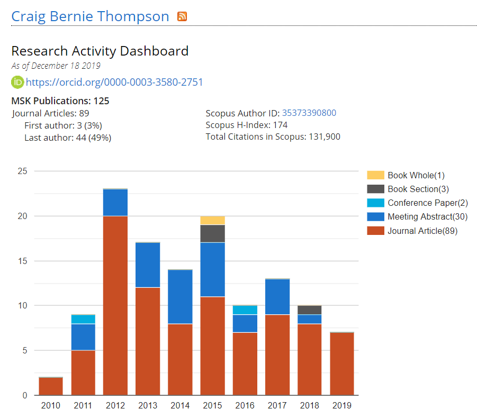It’s the holiday season and a time for reflection, sharing good cheer, spending time with family and friends, and perhaps delighting someone with a special gift.
With this in mind, we are excited to share and hopefully delight our library community by announcing that the Synapse Research Activity Dashboard (RAD) is now available. The RAD can be viewed at the group level, as well as the individual (author) level.
Synapse is the authoritative resource for MSK publications and currently includes content (works) dating back to 1991.
What does the RAD include? When viewing a group, you’ll be presented with team members and counts for all their MSK publications, or you can select by current year-to- date, or the past year. In addition, the research works have been broken down to showcase first author and last author positions on their papers. There are also links to other metrics, as well as the author’s RAD. The individual’s RAD includes a chart illustrating publication formats (Book, Meeting Abstract, Journal Article, etc.) by year. Please note the individual’s RAD only includes the author’s MSK-affiliated publications.

If you’re curious, you can learn more about the metrics we display and feel free to let us know what you think! Feedback is most welcome as we plan to continue to work with Synapse users to further enhance the Research Activity Dashboard.
Donna Gibson
Director of Library Services

